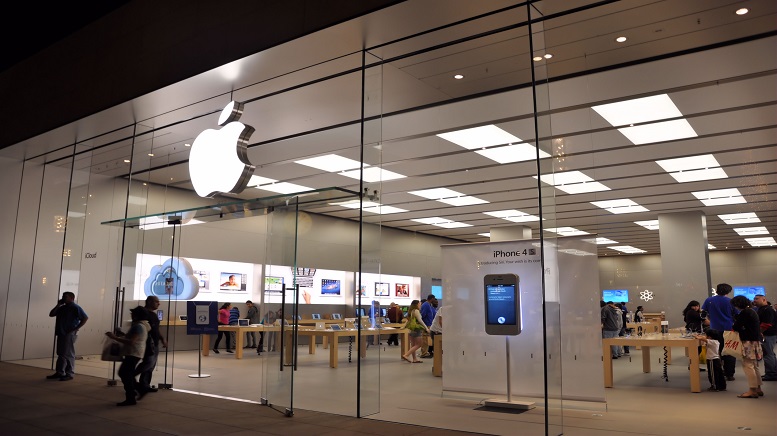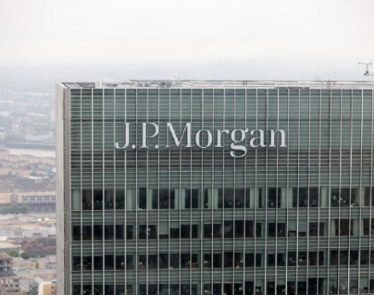
The historic vote by employees at an Apple (NASDAQ:AAPL) store in Maryland to unionize — a first for the tech giant — is an important step in a long process that labor experts say is heavily biased against workers in favor of their employers.
Maryland Store Employees Vote 2-1 to Organize
Workers at Apple stores in a Baltimore suburb voted to unionize on Saturday by a nearly 2-to-1 margin, a local union said, joining a growing push in America’s retail, service, and technology to organize for greater protection in the workplace.
Of the 110 employees at the store in Towson, Maryland, 65 voted in favor and 33 against joining membership in the International Association of Machinists and Aerospace Workers (IAMAW).
The U.S. National Labor Relations Board must now certify the result. A spokesperson for the NLRB referred initial questions about the vote to the council’s regional office, which was closed late Saturday. Apple spokesperson Josh Lipton told The Associated Press that the company declined to comment on Saturday’s development.
The union and Apple can start negotiating a contract once the vote is officially certified.
“Labor law in the United States is a long process. And so the fact that a single store negotiates or elects a union doesn’t mean that there’s a negotiated contract in the workplace. And we know in recent history that in many of these situations, parties are unable to come to terms on an initial contract,” Michael Duff, a former NLRB lawyer and professor at University of Wyoming College of Law, said Sunday in a statement regarding the move to unionize.
“The employer in the United States has an awful lot of rights to simply withdraw recognition at the end of the process. The employer can prove that it no longer supports a majority of the employees in the bargaining unit,” Duff later added.
Duff would go on to note that even after a union is certified, a company has a number of legal maneuvers to challenge it. For example, Apple could say that it does not believe the NLRB-certified bargaining unit is an appropriate bargaining unit and refuse to bargain with the union.
“If that happens, the whole thing goes to the courts and it could easily be a year or two before you even get the question of whether the employer is required to bargain with the union,” Duff added.
According to labor experts, it is common for employers to drag out the bargaining process in an effort to slow down union campaigns. It’s also possible that Apple — or any other company — will restructure its operations so that unionized workers are reclassified as independent contractors and not employees. According to Duff, this strategy would render the union’s vote completely irrelevant.
Although US labor law is generally unfavorable to workers, Mr. Duff thinks that “if there were to be a revival of the labor movement in the United States, it would happen just this way”.
A Growing Movement
It is not yet clear whether the recent wave of unionization represents a broader change in the American workforce. Some experts argue that the current shortage of workers for hourly and low-wage jobs means that employees have more power than they historically had, especially when unemployment is low.
“It’s not that bad to lose one of those jobs because you can get another mediocre job,” said Ruth Milkman, a labor specialist at the City University of New York.
The success of the vote could serve to inspire workers across the country to organize, said John Logan, director of labor and employment studies at San Francisco State University.
Logan noted that workers are beginning to organize at other regional Apple stores, and noted that this could challenge the supposed invincibility of the company.
Apple being a well-known brand is also likely to help the worker’s campaign.
“The public has a very direct relationship with companies like Apple, so the first union victory will generate enormous traditional media and social media coverage,” Logan said. “Young workers learn union activism through this coverage, and some will likely be inspired to try to organize their own workplaces.”
Despite U.S. labor law being stacked against workers, Duff said he believes that if the labor movement is to reawaken then it would begin in such a manner as what we are seeing now.
Union organizing in various fields has recently gained momentum after decades of declining union membership in the United States. Organizers have worked to establish unions at major companies including Starbucks, Amazon, Google’s parent company Alphabet and outdoor retailer REI.
The union and employees seeking to organize said they sent Apple CEO Tim Cook a notice last month that they were seeking to organize a union. The statement said their primary motivation was to seek “rights we do not currently have,” adding that workers have recently organized in the Coalition of Organized Retail Employees (CORE).
“I applaud the courage displayed by CORE members at the Apple store in Towson for achieving this historic victory,” IAM International President Robert Martinez Jr. said in the statement. “They made a huge sacrifice for thousands of Apple employees across the nation who had all eyes on this election.”
Mr. Martinez called on Apple to respect the election results and let unionized employees fast-track efforts to secure a contract at the Towson site.
The IAMAW presents itself as one of the largest and most diverse industrial unions in North America, representing approximately 600,000 active and retired members in the aerospace, defense, airline, railroad railway, public transport, health, automobile and other industries.
Unionization Efforts Across the U.S.
The vote to unionize Apple stores comes amid nationwide organizing efforts — many of which have been pushed back.
Amazon workers at a New York warehouse voted to unionize in April, the first successful U.S. organizing effort in the retail giant’s history.
However, workers at another Amazon warehouse in Staten Island overwhelmingly rejected a union offer last month. Meanwhile, Starbucks employees at dozens of US stores have voted to unionize in recent months, after two of the coffee chain’s stores in Buffalo, New York, voted to unionize at the end of the last year. This domino effect may lead to even more unionizing as the year continues.
Many organizing efforts have been led by young workers in their twenties, or even teenagers. A group of Google engineers and other workers formed the Alphabet Workers Union last year, which represents about 800 Google employees and is led by five people under the age of 35.
“This is the generation with the kind of world view that’s really different than we’ve seen in many generations,” said CUNY’s Milkman. “They believe in this.”
Featured Image: Megapixl © Egometza












